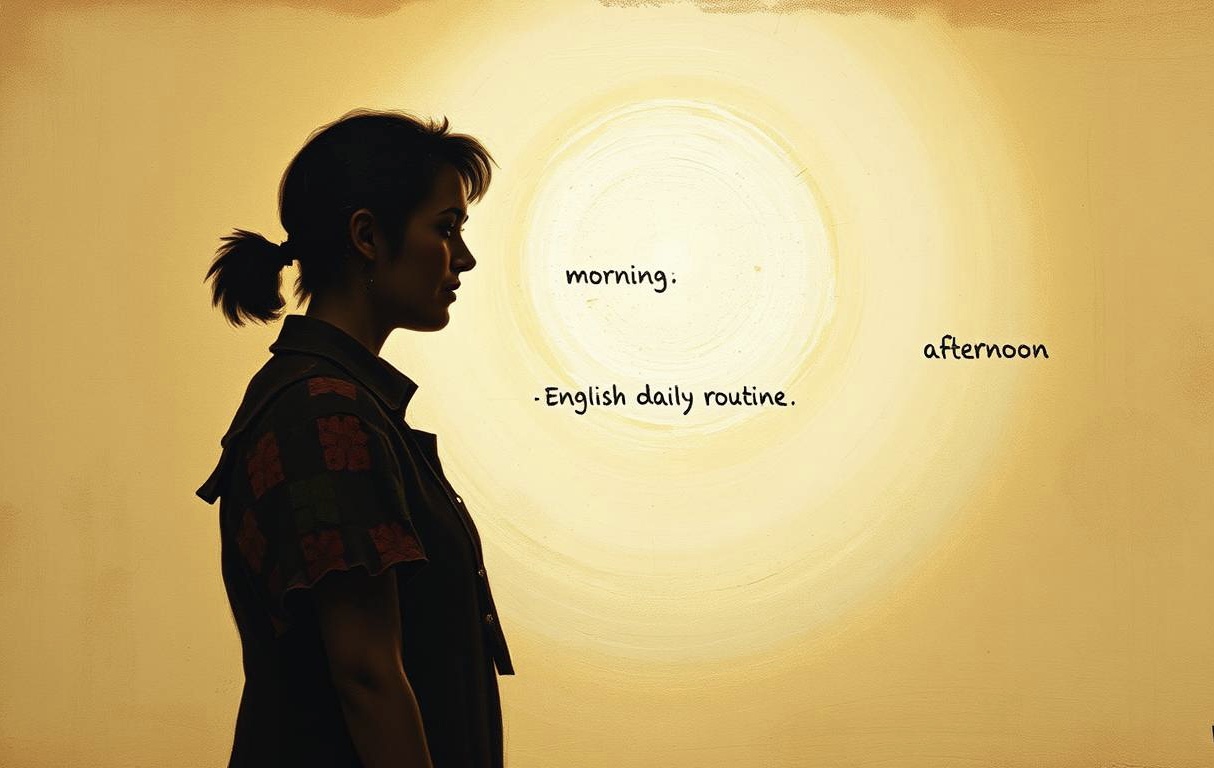Introduction
Describing your daily routine is one of the most practical and useful skills you can learn as an English learner. Whether you’re talking to friends, practicing English with a teacher, or preparing for a job interview, being able to explain your day-to-day activities is essential. For beginners at the A1 level, this guide will teach you simple vocabulary, sentence structures, and tips to describe your daily routine clearly and confidently. By the end of this post, you’ll be able to talk about your morning, afternoon, and evening activities in English with ease.

Why Is Describing Your Daily Routine Important?
Talking about your daily routine helps you practice essential vocabulary related to time, actions, and habits. It also gives you the opportunity to use basic grammar like present simple tense, which is commonly used to describe habitual actions. Additionally, sharing your routine is a great way to connect with others—it’s a topic everyone can relate to!
For A1 learners, describing your daily routine is a perfect way to build confidence because it focuses on familiar activities and straightforward language.
Basic Vocabulary for Describing Your Routine
Before diving into full sentences, let’s review some key words and phrases you’ll need to describe your daily routine. These are organized by categories:
Time Expressions
– In the morning / afternoon / evening
– At 7 o’clock / 8:30 / noon / midnight
– Early / late
– First / then / after that / finally
Daily Activities
– Wake up
– Get dressed
– Brush my teeth
– Have breakfast / lunch / dinner
– Go to work / school
– Study / read
– Exercise / go for a walk
– Watch TV / play games
– Cook / clean
– Go to bed
Common Verbs
– Start / finish
– Take a shower
– Make coffee / tea
– Check emails / messages
– Relax / rest
Adverbs of Frequency
– Always
– Usually
– Sometimes
– Rarely
– Never
Sentence Structures for Describing Your Routine
To describe your daily routine, you’ll mostly use the present simple tense, which is used to talk about habits and repeated actions. Here’s how to structure your sentences:
- Subject + Verb + Object**
– Example: “I wake up at 6 o’clock.”
– Example: “She eats breakfast at 7:30.”
- Adding Time Expressions
– Example: “I brush my teeth in the morning.”
– Example: “We go to school at 8 o’clock.”
- Using Adverbs of Frequency
– Example: “I always take a shower before breakfast.”
– Example: “He sometimes exercises in the evening.”
- Sequencing Actions
– Example: “First, I wake up. Then, I get dressed.”
– Example: “After that, I eat lunch. Finally, I relax.”

A Sample Daily Routine
Let’s look at an example of a typical daily routine. This will help you understand how to combine vocabulary and sentence structures.
Morning Routine
– “I wake up at 6 o’clock.”
– “I brush my teeth and take a shower.”
– “Then, I get dressed and have breakfast.”
– “At 7:30, I leave home and go to work.”
Afternoon Routine
– “I start work at 9 o’clock.”
– “At 12 o’clock, I have lunch with my colleagues.”
– “In the afternoon, I check emails and make phone calls.”
– “I finish work at 5 o’clock.”
Evening Routine
– “After work, I go to the gym.”
– “I cook dinner at 7 o’clock.”
– “Then, I watch TV or read a book.”
– “Finally, I go to bed at 10 o’clock.”
Step-by-Step Guide to Describing Your Routine
Now that you’ve seen an example, let’s break down how to create your own description of your daily routine.
Step 1: Start with the Morning
Begin by talking about what you do when you wake up. Use phrases like:
– “I wake up at [time].”
– “I brush my teeth and wash my face.”
– “I eat breakfast at [time].”
Step 2: Move to the Afternoon
Next, describe what happens during the middle of the day. For example:
– “I go to work/school at [time].”
– “I have lunch at [time].”
– “In the afternoon, I [activity].”
Step 3: End with the Evening
Finish by explaining what you do in the evening and before bed. For example:
– “After work, I [activity].”
– “I eat dinner at [time].”
– “I relax by watching TV or reading.”
– “I go to bed at [time].”
Tips for Talking About Your Routine
Here are some helpful tips to make your descriptions clearer and more engaging:
- Use Simple Language: Stick to short sentences and avoid complex grammar.
– Instead of saying, “I am waking up,” say, “I wake up.”
- Be Specific About Times: Mention exact times to make your routine clear.
– Example: “I wake up at 6:30.”
- Add Details: Include small details to make your routine more interesting.
– Example: “I drink a cup of coffee while reading the news.”
- Practice Sequencing: Use words like “first,” “then,” “after that,” and “finally” to organize your thoughts.
- Ask Questions: If you’re practicing with someone, ask them about their routine too!
– Example: “What time do you wake up?”
Common Mistakes to Avoid
Even beginners can make small mistakes when describing their routines. Here’s what to watch out for:
- Incorrect Verb Tense: Always use the present simple tense for habits.
– Wrong: “I am eating breakfast every day.”
– Correct: “I eat breakfast every day.”
- Missing Articles: Don’t forget to use “a” or “the” where needed.
– Wrong: “I take shower.”
– Correct: “I take a shower.”
- Confusing Prepositions: Pay attention to prepositions like “at,” “in,” and “on.”
– Wrong: “I wake up in 6 o’clock.”
– Correct: “I wake up at 6 o’clock.”
- Overusing “And”: Try not to connect every sentence with “and.” Use sequencing words instead.
– Wrong: “I wake up and brush my teeth and eat breakfast.”
– Correct: “First, I wake up. Then, I brush my teeth. After that, I eat breakfast.”
Practice Exercises
Here are some fun exercises to help you practice describing your daily routine:
Exercise 1: Fill in the Blanks
Complete the sentences below with your own information:
- “I wake up at ________.”
- “I brush my teeth and ________.”
- “I eat breakfast at ________.”
- “I go to work/school at ________.”
- “I relax by ________ in the evening.”
Exercise 2: Role Play
Pretend you’re talking to a friend. Describe your routine step by step. Use sequencing words like “first,” “then,” and “finally.”
Exercise 3: Compare Routines
Find a partner (or imagine one) and compare your routines. Ask questions like:
– “What time do you wake up?”
– “Do you exercise in the morning?”
– “What do you usually eat for breakfast?”
Cultural Notes
In English-speaking cultures, people often value punctuality and organization. When describing your routine, mentioning specific times shows that you’re reliable and detail-oriented. Additionally, many people include hobbies or relaxation activities in their routines, which reflects a balance between work and leisure.
Conclusion
Describing your daily routine in English is a practical skill that helps you practice vocabulary, grammar, and speaking. By following the tips and examples in this guide, you’ll be able to confidently share your routine with others. Remember to keep it simple, use sequencing words, and add personal details to make your description unique.
Now that you’ve learned how to describe your daily routine, why not try it out today? Practice with a friend, teacher, or even in front of a mirror. The more you practice, the more natural it will feel!




